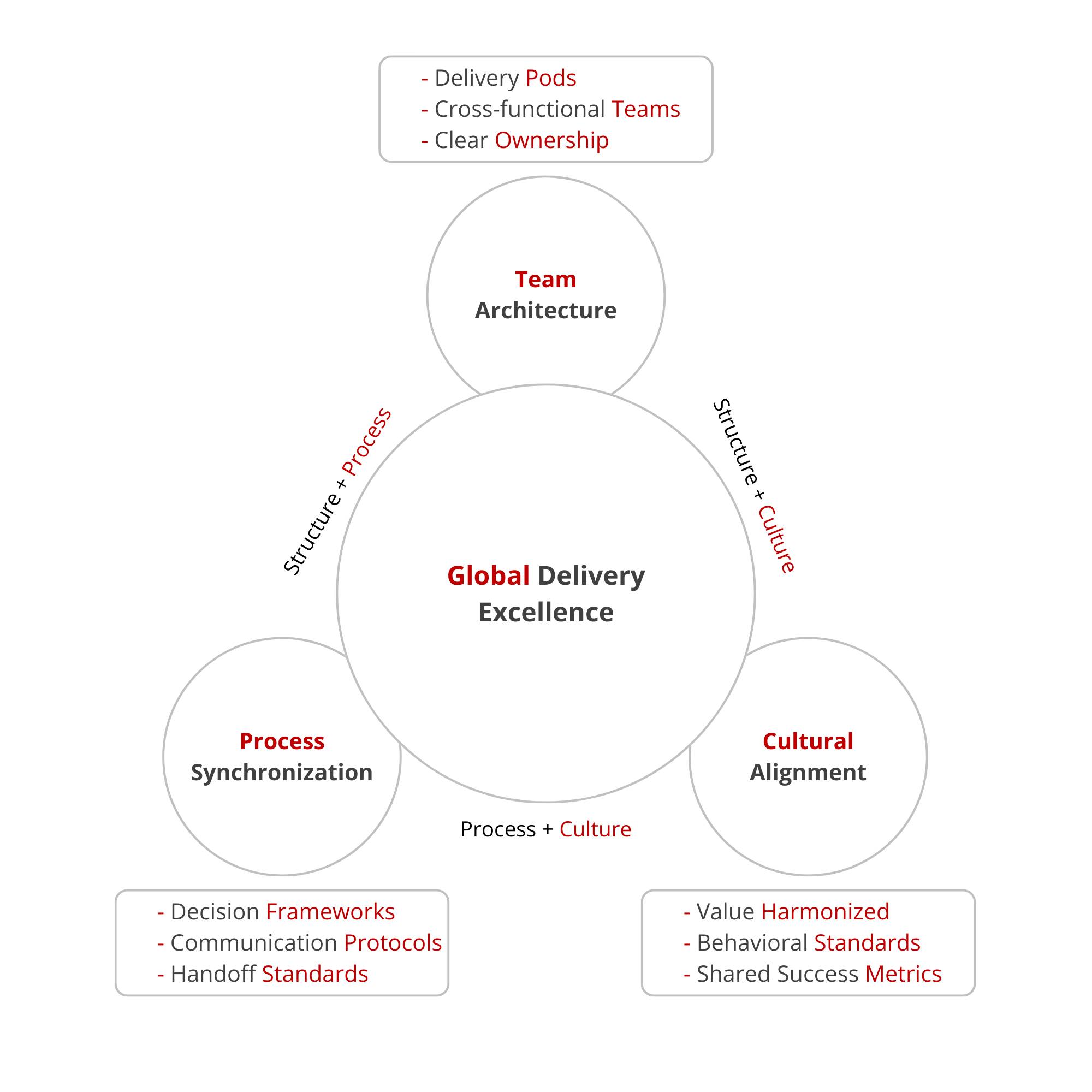|
Happy New Year Transformation Leaders! Have you ever felt that leading global teams is like trying to solve a 12-time-zone jigsaw puzzle, only to discover a few critical pieces are missing? This week’s guide dives into the challenges of global team orchestration – where distance isn’t the real enemy, design is. In this edition, I unpack a proven framework to transform time zone hurdles into delivery advantages, helping you eliminate inefficiencies and accelerate outcomes across continents. The edition offers insights designed to drive immediate impact, from actionable strategies aligning your team architecture, to process synchronization, and cultural cohesion. Don’t let time zones dictate your team’s success. Start turning global complexity into growth today. 🌍🚀 Warm regards, Adi Edition 3/ TURN GLOBAL TEAMS INTO HIGH-VELOCITY VALUE ENGINES I recall advising a CEO whose CTO and engineering leaders were managing a $150M digital transformation spanning 12 time zones. “Every decision takes weeks,” they confessed. “By the time we align all regions, we’ve lost momentum.” The frustration was palpable – and not unique. Leading global teams often feels like navigating a maze, where every twist delays progress. But here’s the thing – global teams don’t fail because of distance; they fail because of design and culture. After orchestrating worldwide teams at major financial institutions, I’ve addressed this challenge on many occasions. The barrier isn’t geography; it’s orchestration. Using a framework that turns geographical challenges into delivery advantages, let us explore how to eliminate the inefficiencies that hold your global teams back. BREAK GLOBAL GRIDLOCK The Challenge: Global delivery promises scale and efficiency, yet too often it devolves into gridlock:
A Fortune 500 case study illustrates this well: a $200M platform transformation stalled due to poor coordination across APAC and EMEA regions. The result? Missed deadlines, overruns, and a frustrated leadership team.
As Peter Drucker famously said, “Efficiency is doing things right; effectiveness is doing the right things.”
In this case, both were missing. So, how can we turn this gridlock into growth? THE FRAMEWORK: GLOBAL DELIVERY OPTIMIZATION MODEL Global teams succeed when we orchestrate Team, Process, and Culture into a unified whole.
1. Team Architecture The foundation of any high-performing global team is its architecture. Think of this as the blueprint that aligns capabilities across regions.
2. Process Synchronization Processes should minimize delays and maximize clarity.
3. Cultural Alignment Cultural alignment is often overlooked but critical to success.
As Simon Sinek reminds us, “People don’t buy what you do; they buy why you do it.”
When teams share a common purpose, their productivity soars. IMPLEMENTATION GUIDE Quick Wins (30 Days)
Medium Term (90 Days)
Long Term (180 Days):
CASE SNAPSHOT A global technology company faced 3-week decision cycles and 60% delivery efficiency. Frequent quality issues and duplicate efforts further compounded frustrations. By adopting the Global Delivery Optimization Model, they achieved transformative results. Before → After
Average Decision Cycle: 3 weeks → 2 days
Delivery Efficiency: 60% → 85%
Team Satisfaction: 40% → 90%
Coordination Overhead: High → Autonomous operations with consistent quality
Key Move: Started by implementing decision frameworks, providing immediate clarity and momentum before addressing team structures or processes. GET READY TO ACT THIS WEEK LEADER’S TOOLKIT Global Velocity Assessment To identify bottlenecks and improve delivery velocity, follow these steps:
Expected Impact: Up to 40% reduction in decision cycles within 30 days. IN CLOSING Remember: The biggest opportunity in global delivery isn’t eliminating time zones; it’s in eliminating unnecessary synchronization. Start with your decision paths this week. Map them, measure them, and optimize ruthlessly. Your teams don’t need more meetings – they need more clarity. TOOLS IN THIS EDITION Global Delivery Assessment Template.pdf FollowShare this newsletter with friends |
Edition 3/ Unlock the Secret to High-Velocity Global Teams









Comments